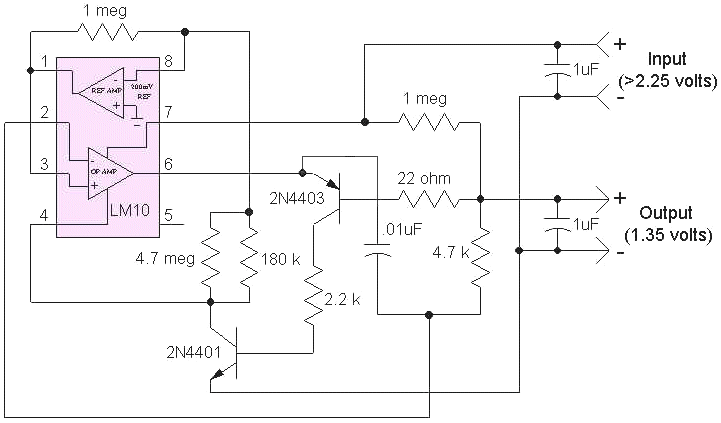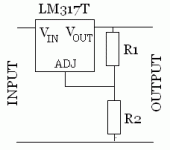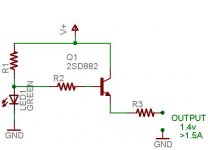I have 3 pieces of older test equipment that use 1.345v mercury batteries.
I believe they are either used as reference voltages, or one unit uses 2 batteries (for +1.345v) and might be used in a dc bridge (for a null detector unit).
I have found these two things...
1)....For cameras, there is a "silver oxide" 1.55v battery and a zinc disc or other adapter, to mimic the mercury's steady 1.345v.
(or there's a "Wein Cell", zinc-air battery, but only lasts a few months)
http://www.cameracheckpoint.com.au/html/mercury_battery.html
http://www.weincell.com/
2)....Using any battery of a higher voltage, then regulating them to 1.345v.
http://www.techlib.com/electronics/mercury.htm

I'm not sure if a "voltage reference" chip would work.....the closest voltages are 1.2v, or there's a 1.2875v.
(I suspect in the bridge circuit, that the 1.55v silver oxide's might work straight-away, because they're just there to achieve a null, anyway.)
There may be some newer very-low dropout regulators to regulate a battery.
I do have some Vref ...TL431....LM385-1.235v....LM134 & 234.
help ??
=RR=
I believe they are either used as reference voltages, or one unit uses 2 batteries (for +1.345v) and might be used in a dc bridge (for a null detector unit).
I have found these two things...
1)....For cameras, there is a "silver oxide" 1.55v battery and a zinc disc or other adapter, to mimic the mercury's steady 1.345v.
(or there's a "Wein Cell", zinc-air battery, but only lasts a few months)
http://www.cameracheckpoint.com.au/html/mercury_battery.html
http://www.weincell.com/
2)....Using any battery of a higher voltage, then regulating them to 1.345v.
http://www.techlib.com/electronics/mercury.htm

I'm not sure if a "voltage reference" chip would work.....the closest voltages are 1.2v, or there's a 1.2875v.
(I suspect in the bridge circuit, that the 1.55v silver oxide's might work straight-away, because they're just there to achieve a null, anyway.)
There may be some newer very-low dropout regulators to regulate a battery.
I do have some Vref ...TL431....LM385-1.235v....LM134 & 234.
help ??
=RR=
It's quite easy to produce a suitable voltage for the majority of battery driven gear, you can drop an overvoltage battery or cell a few tenths of a volt using a series diode. You can use a zener or an LED depending on the exact voltage required.
Since different batteries have different discharge characteristics this may not result in an ideal output throughout.
You can assemble button cells into a tube to get excess voltage to drive a regulator.
Or you can arrange a supply from the mains.
This said, making the whole thing fit into some apparatus such as a camera, and be portable, and have a useful service life is another thing.
Sometimes it's just better to let the equipment go. I wouldn't be running a battery-driven valve radio receiver these days other than as a demo. Where can you buy a grid-bias battery?
w
Since different batteries have different discharge characteristics this may not result in an ideal output throughout.
You can assemble button cells into a tube to get excess voltage to drive a regulator.
Or you can arrange a supply from the mains.
This said, making the whole thing fit into some apparatus such as a camera, and be portable, and have a useful service life is another thing.
Sometimes it's just better to let the equipment go. I wouldn't be running a battery-driven valve radio receiver these days other than as a demo. Where can you buy a grid-bias battery?
w
Hi,
If you use green LED, which has a voltage drop of approximately 2v, your reference voltage would be 2v. Now feed this to a transistor and at the output you get 2v - 0.6v(for transistor) = 1.4v.
The output voltage would remain 1.4v irrespective of input voltage, as long as the LED current is limited and the transistor can handle that input voltage.
This 1.4v should work where you need a 1.35v power source.
If you use green LED, which has a voltage drop of approximately 2v, your reference voltage would be 2v. Now feed this to a transistor and at the output you get 2v - 0.6v(for transistor) = 1.4v.
The output voltage would remain 1.4v irrespective of input voltage, as long as the LED current is limited and the transistor can handle that input voltage.
This 1.4v should work where you need a 1.35v power source.
Check out LP2951 micropower low dropout regulator. Typical quiescent current is 75uA (microamperes!) and output is adjustable down to 1.24V througn an external resistive divider. Input voltage may be as low as 2V for 1.24V output, and dropout at low currents is as low as 40mV.
Hi,
I have used this circuit to power a digital thermometer which used a mercury cell.
In my opinion, this is the easiest circuit to fulfill redrabbit's requirement.
If you use 2SD882 transistor, you get an output current capability of >1.5A, so this would be pretty useful.
Voltage input can be upto 40v for 2SD882 and the output will remain 1.4v.
Voltage input can be as low as 2.8v.
Here, green LED must be used, since different LEDs have different voltage drops.
R3 could be given as per required according to the power requirement or can be omitted.
I have used this circuit to power a digital thermometer which used a mercury cell.
In my opinion, this is the easiest circuit to fulfill redrabbit's requirement.
If you use 2SD882 transistor, you get an output current capability of >1.5A, so this would be pretty useful.
Voltage input can be upto 40v for 2SD882 and the output will remain 1.4v.
Voltage input can be as low as 2.8v.
Here, green LED must be used, since different LEDs have different voltage drops.
R3 could be given as per required according to the power requirement or can be omitted.
Attachments
I did this for a Gossen meter --
http://www.tech-diy.com/gossen.htm
Linear Tech had a note which appeared in EDN of a very, very low dropout regulator -- this is going to be a big field owing to "energy scavenging".
http://www.tech-diy.com/gossen.htm
Linear Tech had a note which appeared in EDN of a very, very low dropout regulator -- this is going to be a big field owing to "energy scavenging".
Thanks Tahmid and everyone else.
I will try some of those other options.
In the meantime, I built a circuit using two LM317LZ, (each trimmed by 100 ohm pots) wired at the output for + 1.34 volts.
I didn't have the negative LM337LZ.
Powered by 2x2 AA rechargeable's (4 batteries total, 2 per LM37LZ).
=RR=
I will try some of those other options.
In the meantime, I built a circuit using two LM317LZ, (each trimmed by 100 ohm pots) wired at the output for + 1.34 volts.
I didn't have the negative LM337LZ.
Powered by 2x2 AA rechargeable's (4 batteries total, 2 per LM37LZ).
=RR=
- Status
- This old topic is closed. If you want to reopen this topic, contact a moderator using the "Report Post" button.
- Home
- Amplifiers
- Power Supplies
- Regulator for Battery ??

